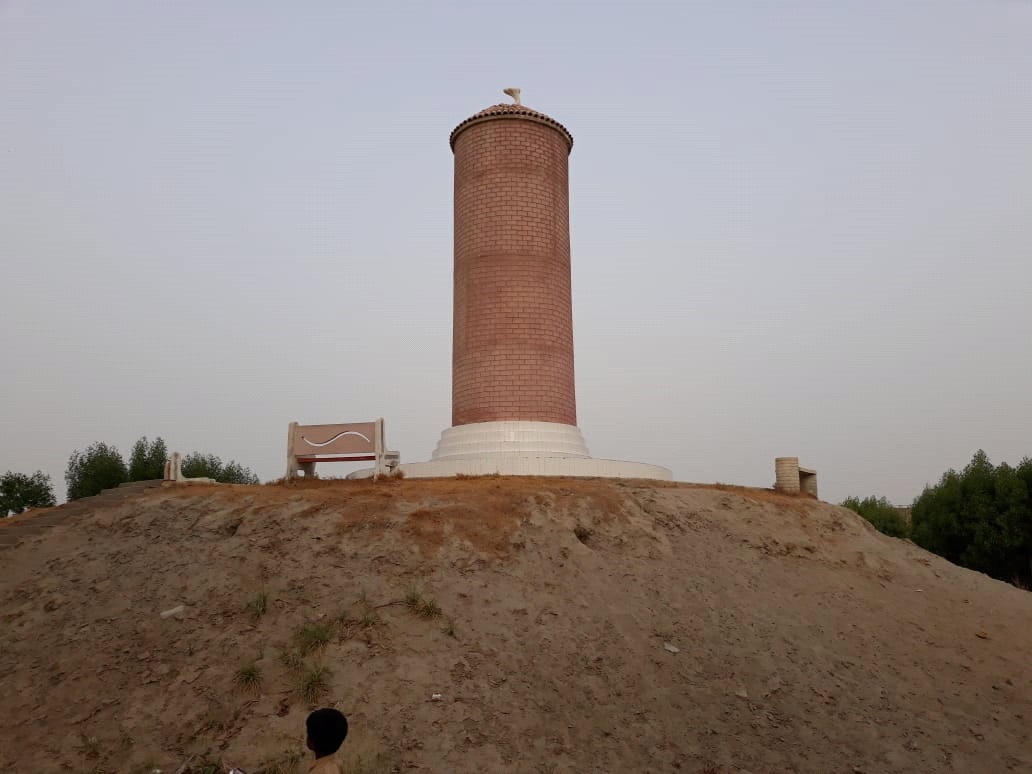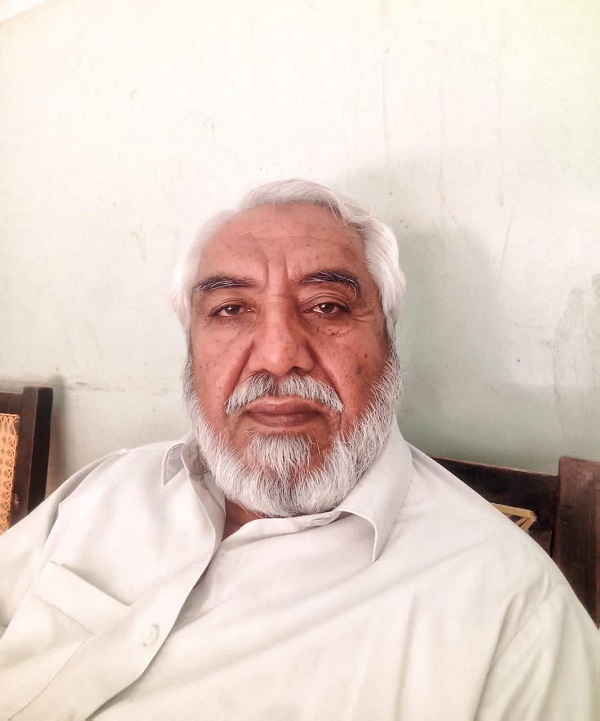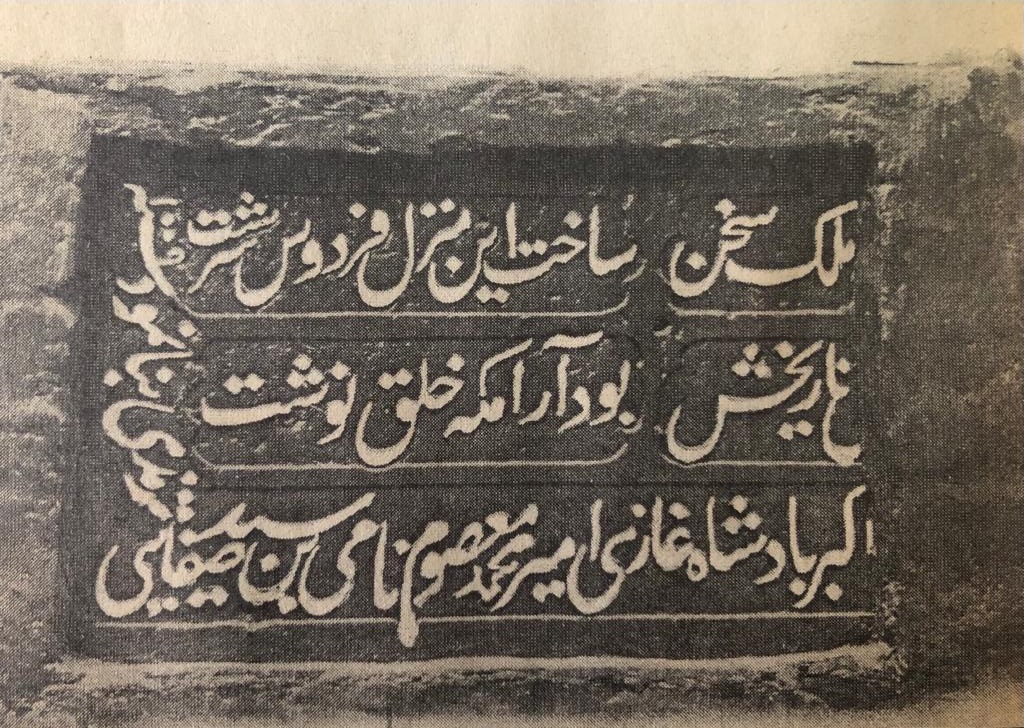Written by: Sirat Gohar Daudpoto
Posted on: July 03, 2023 |  | 中文
| 中文
Lakhi Dar in the 1990s, Shikarpur (Photograph by Prof. Dr. M. Shareef “Shad” Soomro)
The urban built heritage of Pakistan is fascinating, because it is complex and offers a unique experience of life through buildings, monuments and structures belonging to ancient, mediaeval and modern times. Historic structures, particularly that of the mediaeval period, stand out in the modern urban landscape of the country. Most of the cities of Pakistan were built during the mediaeval period, such as Lahore, Peshawar, Multan, Bahawalpur and Hyderabad, to name a few. These mediaeval cities are mostly walled, and were built by Muslims. It would not be an exaggeration to say that mediaeval cities dominate the urban heritage of the country, and at that time mediaeval Pakistan was largely Muslim.
Shikarpur is one of those many mediaeval cities that were built by the Muslim dynasties during the mediaeval age. There are several places with this name in Pakistan, but the subject of this article is a city located in the northern parts of the Sindh province. In Sindh, people call it by different names: the city of the literati, the Paris of Sindh and the affluent city. Thanks to the scholars, who with the help of epigraphic and historical data reconstructed the history of the city, it has long been brought to the fore that Shikarpur was founded by Daudpotras in 1617 CE. However, in recent years, some scholars have argued that it was built in the mid-seventeenth century.
It has yet to be ascertained as to when Shikarpur was founded, and what was the ethnic identity of the Daudpotras, who have wrongly been identified as a Baloch tribe in recent works. There are many inaccuracies and poor research on Shikarpur. In order to determine the early history of Shikarpur, this article contains the answers of the following questions through epigraphic evidence, historical accounts and oral tradition (both documented and unrecorded). How the city was founded, by whom and when? Both the historical accounts and oral traditions mention that the area where the city of Shikarpur was built was a dense forest, which used to be the hunting ground of the Daudpotras. According to the historical account entitled “Gulshan-e-Abbasia (The history of the Daudpotra family)” by Sardar Jan Muhammad Khansahab Daudpotra, Shikarpur was founded in 1602 CE by the Daudpotras after defeating the Mahar tribe in Lakhi. Daudpotras completed the construction of Shikarpur city in 1048 AH or 1638-39 CE. The Daudpotras initially fought with the Mahar tribe under the command of Ameer Pheroz Khan, and then his son Ameer Bahadur Khan II. Gulshan-e-Abbasia mentions that the battle of Lakhi was fought between Daudpotra Khans and Karim Dina Mahar, who was the headman of Mahars and the landlord of Lakhi, in 1602 CE. It recounts that the conflict between the two groups had arisen on chopping off the tails and ears of the horses of Karim Dina Mahar by the people of Daudpotra, who won the battle and plundered the Lakhi.
Furthermore, F.G. Goldsmid in his, “A Historical Memoir on Shikarpoor”, has recorded two traditions of the foundation of the city. According to one tradition, “Old Peer Ibrahim had gathered with his forefathers in a dream, and that one of the surviving followers saw, in a dream, the holy man and a stranger drawing water at a well, without the usual aid of menials or cattle, and the Peer turning towards the disciple said, “I and my friend Khizr [usually considered by Mahomedans to be the Prophet, possessing the water of life] are thinking of building Shikarpoor. It is to be a large city.” The other tradition is related to Lakhi, and it also revolves around Pir Ibrahim Shah. According to this account, Daudpotras emerged victorious with the blessings of their spiritual leader, Peer Sultan Ibrahim Shah, who led the Daudpotras and selected a piece of land to build a city which, he suggested, should bear the name of Shikarpur. Some scholars believe that Daudpotras built a monument in Lakhi, locally called Lakhi Munaro and Thul, to commemorate their victory, and due to the battle of Lakhi, it is also called Lakhi Waaro Maaro, meaning “the battle of Lakhi”.

Monument of Lakhi (locally called Lakhi Munaro) in Lakhi Town, Shikarpur (Photography taken by the author)
Daudpotra or Daudpota? The founders of Shikarpur were Daudpotras, also written as Daudpota (singular: Daudpoto), one of two Abbasid dynasties of Sindh, the other being Kalhora. They have Arab ancestry and are the descendants of Hazrat Abbas (R.A), who was the uncle of Prophet Muhammad (S.A.W.). Their ancestors under the leadership of Ameer Sultan Ahmad Abbasi II migrated from Egypt to Sindh in 1366 CE. They came to Sindh through Makran (Balochistan) and settled in a place called Kanji in Sahita territory. Initially, they stayed in Kanji but later on, due to their increasing population, moved to different places from time to time, for instance, Kahir Belo, Tarai, Bakhar, Lakhi and so on. The Abbasid dynasty of Sindh, which was founded by Ammer Sultan Ahmad Abbasi II, broke up shortly after the death of Ameer Channi Khan Abbasi, who had two sons Muhammad Mehdi Khan Abbasi and Muhammad Daud Khan Abbasi II. As per the will of Ameer Channi Khan, his possessions were divided amongst his two heirs. According to Gulshan-i-Abbasi, his elder son Muhammad Mehdi became king of the dynasty and Muhammad Daud II was given sacred relics of the family. Ameer Channi Khan wanted Muhammad Mehdi to be his successor as a ruler, and Muhammad Daud II to be the heir of their hereditary khilafat. Muhammad Mehdi died after a few years and a dispute of succession arose between his son Muhammad Ibrahim Khan Abbasi, also known as Kalhoro Khan, and Muhammad Daud II that resulted in the division of the family into Kalhora, after Muhammad Ibrahim, and Daudpotra, after Muhammad Daud II. The purpose of mentioning their lineage is to show that the founders of Shikarpur, Daudpotras, were Arab by origin, not Baloch like Dr. Anila Naeem has identified them in her article titled “Shikarpoor: De-spirited and Defamed – Waiting to be Salvaged”.

Muhammad Din Khan Daudpoto, alias Paryo Murss, member of the family of founders of Shikarpur and President of the Anjuman-i-Itehad Daudpotra
Based on epigraphic and historical data, it is argued that the city of Shikarpur was founded at the end of the sixteenth century by Ameer Pheroz Khan Daudpotra and was completed by his son Ameer Bahadur Khan II in 1638-39 CE. However, the date 1617 CE (or 1026 AH), which is calculated from the Persian word gok, meaning frog and is generally accepted to be the year of the foundation of Shikarpur city, marks the date of the construction of the mosque. This date also has to do with the city’s construction because the mosque was a part of the plan of the city, as the Daudpotra were Muslims and mosques were always part of their settlements. As far as the Mir Masoom Shah’s inscription that mentions the date 1009 AH (1600-16001), it belongs to the early years of the city. Overall, it can be said that the mediaeval city of Shikarpur was constructed between the last years of the sixteenth century and 1638-39 CE by the Ameers of the Daudpotra dynasty, when they established their rule over the area between present-day Sukkur and Shikarpur districts on the western side of River Indus.

Inscription of Mir Masoom Shah of the year 1009 AH (1600-1601 CE), found in the shrine of Pir Ismail Shah (Photograph scanned from H.M Bhutto’s book)
You may also like: